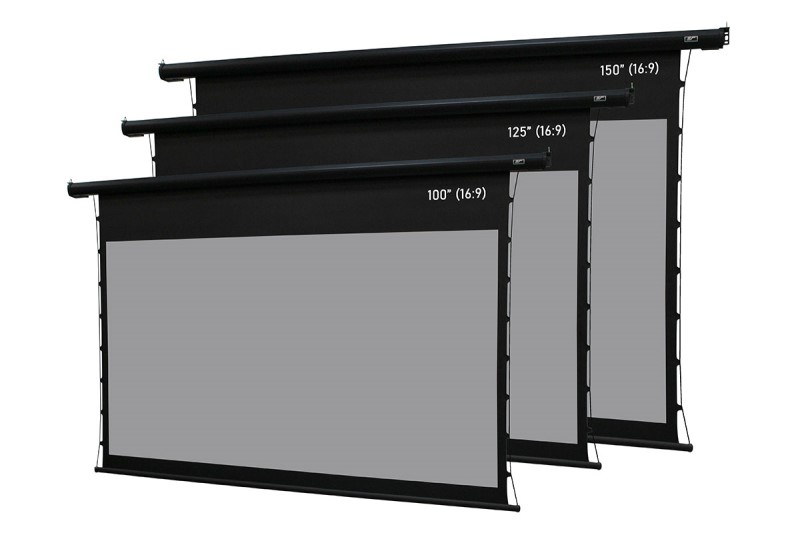How Good Are Projector Black Levels
You’ve always wanted a “true” home theater with a projection setup. Having a movie theater in your house? Life goals! But one thing has always bothered you – black levels. A projection screen is white. Doesn’t that mean that the screen will never truly be black? Are modern projectors any better with black levels? What’s the scoop? Let’s discuss!
What is Black?
Before we get into the minutia of this question, we need to address the concept of “black.” Black, especially when we are talking about home theater displays, is the absence of light. On an OLED, to create a black pixel, the display turns that specific pixel off. LEDs have a much harder time with this. To create black, there should be no light coming from the display.

Projectors, by definitely, project light. UST projectors do it from very close to the screen while traditional projectors do it from across the room. As you can imagine, it is very hard to project “black” when we’ve defined it as an absence of light. On top of that, the projection screen is designed to reflect light. So even if a projector could project zero light, at some other point on the screen there will surely be some projected light. That light will reflect off the screen, off the objects in the room, and back onto the screen. This is why some people are so adamant about painting the walls of their theater black.
Have Home Theater Projectors Gotten Better?
Home theater projectors have definitely gotten better black level performance over the years. Epson’s 5050UB has very good performance for the price though you’ll have to bump up to the JVC models for best-in-class performance. That said, none of these projectors will have the same black level performance as an OLED or a high-quality LED with FALD. That’s because of how projection screens work.
Do The Test
If you want to know how black a projector can get in your room, grab a white piece of notebook paper. Tape it to the wall where your projection screen will live. Now turn off all the lights in the room as if you were in there watching a movie. Can you still see the paper? Depending on your room or the time of day, you probably can. That paper is picking up all the ambient reflected light in your room. That’s just as dark as a projection screen can get in your space.

If you can truly get your room completely black (so that you can’t see the paper at all), then you can do this second test. Shine a flashlight around the room. Does the light reflect back so that you can now see the paper? This will be similar to the light that will hit the “black” parts of your screen when you are watching content. Will you notice it during playback? Maybe. Probably not. But you might.
Grey and Black Screens
Before the Reddit lynch mob comes after us, yes, we know about grey and black screens. These screens are designed to reflect less ambient (and overall) light in order to increase our perception of their black level performance. Do they work? Yes! But it is at the cost of overall picture quality and brightness. Yes, your black levels will look better. But it is surely not a solution for everyone.
In Real World Tests
It’s very easy for nearly anyone to pick out the differences between the black levels of an OLED and a projector when they are side-by-side. You need to ask yourself one question: “Will you ever have a projection screen and an OLED side-by-side in your home?” If not, you may find that the question of black levels is purely academic.
I have a projector and I have for years. If I switch between different projectors in my system, I can usually point out black level performance differences quite easily. If I have a flat panel TV in the house, the black level differences are usually very easy to see.
However, after a few minutes of using my projector, my eyes adjust, my mind starts to focus on what I’m watching, and I stop seeing the slightly grey blacks on my projection screen. Are they there? Yes. But I don’t often notice them. Objectively, the black level performance of a projector might not be perfect, but you can get pretty darn good. For the size of the image you can get from a projector, you can’t beat the price with a flat panel (yet).
It Is Highly Dependent on Your Room
Are black levels better on projectors? Yes. But they still aren’t perfect. If you want perfect black levels, you’ll have to buy an OLED (at least for now). But if you did the paper test (above) and you couldn’t see your hand in front of your face, then your room is as ready for a projector as possible. Get one with good black level performance and you’ll have a projector setup that your friends will envy. Will it have “perfect” black levels? No. But no one will notice.


